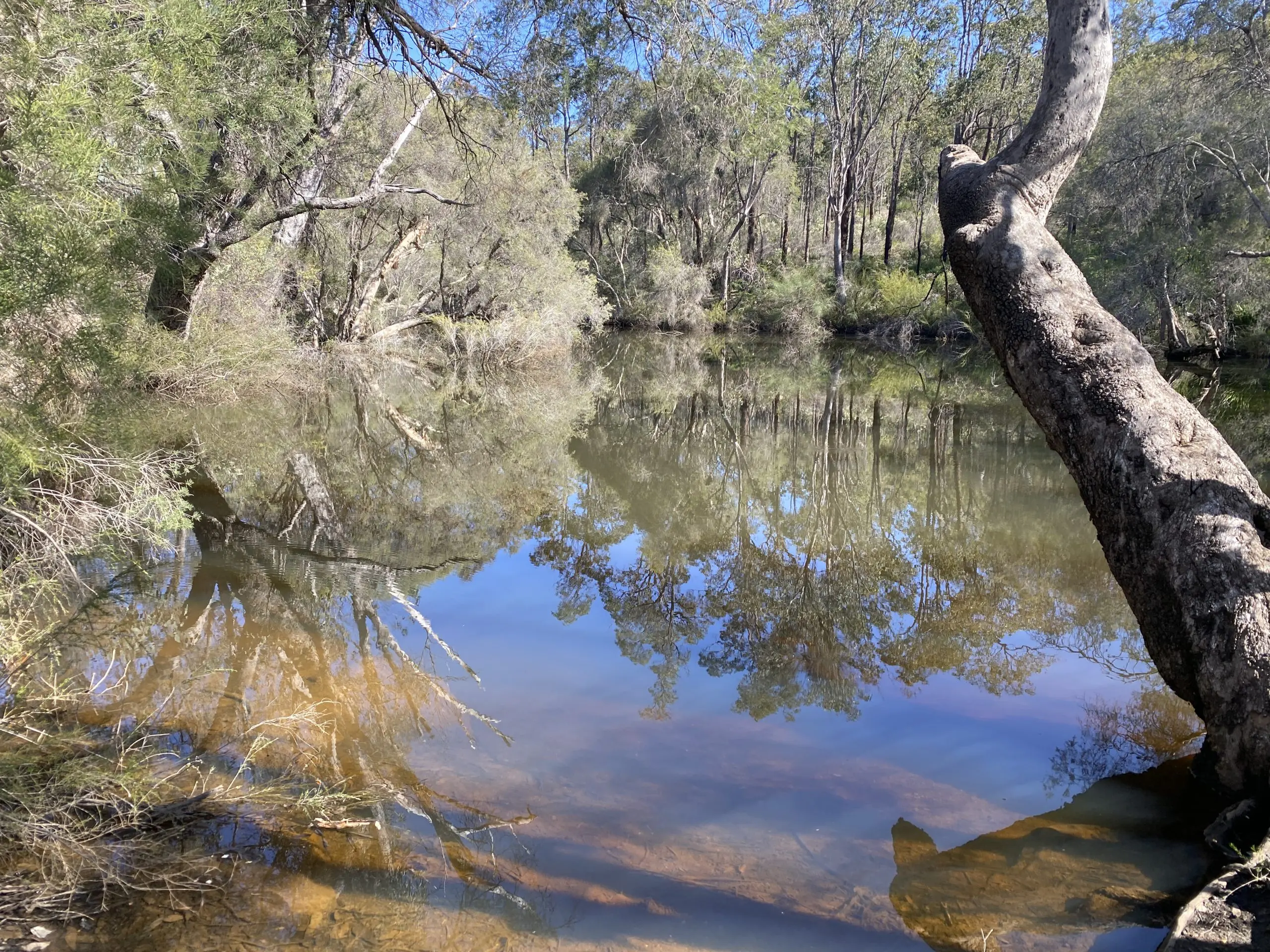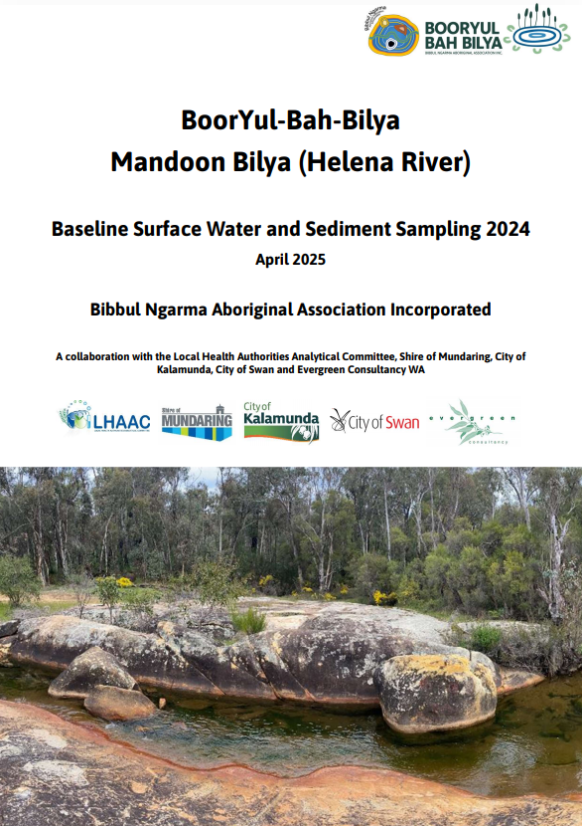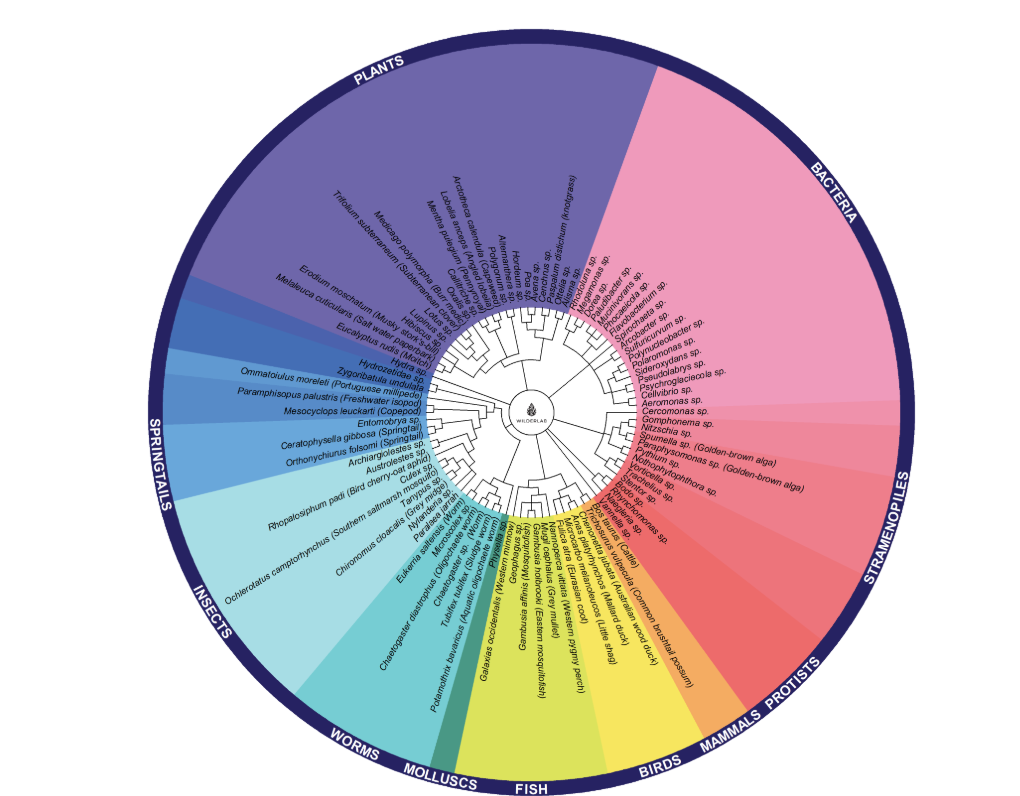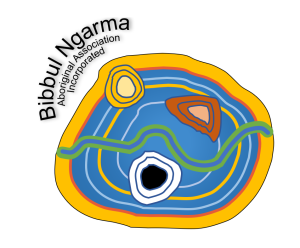BOORYUL-BAH-BILYA CONSERVATION AUDIT
The BoorYul-Bah-Bilya Conservation Audit is a landscape-scale conservation audit to document the current ecological health of the river and establish a baseline to measure future changes. It aims to answer the following questions:
- How healthy is the river?
- How can we improve the river’s health?
To help us answer these questions, we are undertaking:
- Water and sediment sampling
- eDNA sampling
- Fauna camera monitoring
- Weed and vegetation surveys and mapping
- Data review


WATER AND SEDIMENT SAMPLING
In 2024, we collected surface water and sediment samples from 12 locations across the Mandoon Bilya (Helena River) catchment. The objective was to increase our understanding of the river’s health and contribute towards a baseline for further investigation and monitoring future changes.
This work is significant as it represents the most samples collected from the river in a single sampling event in the last 20 years (and possibly ever!).
The sampling was enabled by funding from three local governments (City of Kalamunda, Shire of Mundaring, City of Swan) that was facilitated by the Local Health Authorities Analytical Committee, a statutory WA State Government entity under the Health (Miscellaneous Provisions) Act 1911.
The sampling results are presented in THIS REPORT, as summarised below:
- Water Quality: The river is predominantly fresh with neutral pH. It has elevated dissolved particles and areas of low dissolved oxygen.
- Nutrients: The river contains elevated nutrients, mostly as nitrogen. Total oxidised nitrogen and nitrate were an order of magnitude higher in Piesse Brook, a tributary of Mandoon Bilya, than at other sites.
- Metals: The river contains elevated metals. These include naturally occurring metals like iron, manganese and aluminium, as well as those that may be due to human activities such as chromium and lead.
- Microbes: The river contains elevated microbes. Escherichia coli (E. coli) and Enterococci were detected at all sites and Thermophilic Amoeba at three sites. Naegleria fowleri were not identified at any site.
- Herbicides and Pesticides: Pesticides were detected at only two sites, however previous sampling required passive techniques to detect pesticides and herbicides at low concentrations.
- Hydrocarbons: The river’s sediment contains elevated hydrocarbons. It is unknown if they are naturally occurring or due to human activity.
- PFAS: The river contains elevated per- and polyfluoroalkyl substances. Concentrations were highest in the lower catchment.
- Surfactants: The river contains elevated surfactants.
eDNA SAMPLING
With support from Lotterywest, environmental DNA (eDNA) sampling will be undertaken across the catchment in 2025 to enable a more complete picture of river health to be considered as part of a multiple lines of evidence based approach.
eDNA is used to detect the species present in an area from DNA that is shed in the environment.
The team at eDNA Frontiers at Curtin University produced this incredible “Wheel of Life” diagram from a water sample we collected from Mandoon Bilya in 2023.


FAUNA CAMERA MONITORING
We have placed fauna cameras across the Mandoon Bilya catchment to monitor the presence of animals.
The cameras have observed native animals such as chuditch, phascogale, as well as feral pests such as foxes and cats.
In 2024, we were very excited to discover a new quokka population in the catchment.
This is the first time that quokkas have been photographed in the Perth Hills by the general public and is an exciting discovery for conservation of the species.
We are looking forward to learning more about them and how to help them thrive.
But before you head to the hills, the best place to see quokkas is still on Wadjemup-Rottnest Island!
